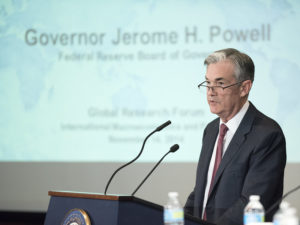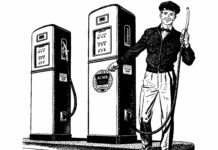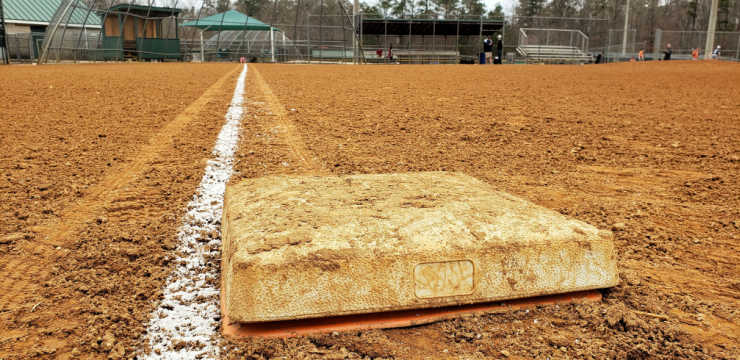
You know inflation is hurting America. From unpredictable commodity prices like those for timber, to summer vacation travel, Americans are facing the difficult effects of inflation.
Inflation is the worst form of taxation. It is hidden, and it hurts the poorest the most. But the Federal Reserve has decided that America needs more of it, and it doesn’t seem to care whether or not that’s hurting savers or retirees. It is, in case you had any doubt.
Even though the Fed is actively trying to achieve inflation, it wasn’t ready for just how much prices have gone up. The Wall Street Journal’s editorial board has taken a moment to wonder at the Fed’s ability to get economic forecasting so wrong, so often, despite employing so many professional economists. They write:
The Federal Reserve employs hundreds of economists whose job is assessing the American economy. So it is remarkable that the Fed is so wrong so often in its economic forecasts. The latest big miss has been its failure to anticipate this year’s surge in consumer prices.
Fed Chairman Jerome Powell conceded at his press conference Wednesday that prices had caught the central bank by surprise, but he showed no particular concern. The Federal Open Market Committee’s statement Wednesday after its two-day meeting also showed little interest in reeling in what has been the most reckless monetary policy since Arthur Burns roamed the Eccles Building. History hasn’t been kind to Burns.
Let’s compare actual inflation with the Fed’s forecasts. The nearby chart shows the estimates of inflation by Fed officials for 2021 and price increases this year. Fed governors and regional bank presidents offer their economic estimates of growth, unemployment, inflation and interest rates each quarter. The chart shows the median estimate of the Fed forecasters from June 2020 to last month for the personal consumption expenditures (PCE) deflator, the Fed’s favorite price index.
Note that through December 2020 Fed officials assumed PCE inflation this year of 1.8%. By March they had bumped that up to 2.4% as price pressures were already being felt. In June the median had climbed to 3.4%.
Yet even that catch-up drill underestimated the price surge. The PCE index had already climbed 3.6% in April from a year ago and 3.9% in May; the June figure will be out Friday.
The consumer price index, which is calculated differently, rose at an even faster rate. As the chart shows, the CPI increased at an annual 5.4% rate in June, after rising 5% at an annual rate in May. The Fed is way behind the price curve. Price increases would have to decline precipitously in the next six months to get close to the Fed’s median June forecast of 3.4% for 2021, much less its 2% inflation target.
On Wednesday Chairman Powell again explained the inflation miss as the result of the unusual nature of this economic recovery. Supply bottlenecks are creating shortages that are causing temporary price increases, he says, and he’s right about the shortages.
But this lets the Fed off the hook too easily for its monetary policy. The Fed had to act in spring 2020 to prevent the pandemic lockdowns from becoming another depression. But it has maintained its policy of near-zero interest rates and $120 billion a month in bond purchases for 16 months.
It has done so despite a roaring economy and rapid job creation. The National Bureau of Economic Research reported last week that the pandemic recession officially ended in April 2020 after only two months. The economic recovery has accelerated this year as the vaccines have come on line. Economists are anticipating that Thursday’s GDP report will show growth in the second quarter of 8%.
Even by the Fed’s own theory of what causes inflation—the output gap between actual and potential production—prices should be rising. What output gap? The labor participation rate hasn’t returned to its pre-pandemic level, but with the many disincentives to work coming from Washington, millions may stay on the sidelines no matter what employers pay.
Until he recently took a vow of silence on fiscal policy, Mr. Powell also spent a year prodding Congress to spend ever-more trillions of dollars that have spurred economic demand even as supply is constrained. This has also contributed to inflation, and the mountain of new debt has made it harder politically for the Fed to taper its purchases of Treasurys. You don’t have to be a cynic to wonder if the Fed privately now wants more inflation to ease that rising debt burden. The progressive intelligentsia is already making that case.
Consumers may feel differently, as they pay more for goods and services across the economy. Housing prices are soaring out of reach for millions. The public’s optimism about the economy from earlier this year has ebbed, and more voters are expressing concern about rising prices. The White House can read the polls.
One trait of the modern Fed is never to take responsibility for financial and economic problems. The financial panic of 2008 was the bankers’ fault. The historically slow expansion after 2009 was the fault of fiscal policy. Now the inflation surge is due to forces beyond its control. If the Powell Fed won’t even accept responsibility for the price level, which is central to the Fed’s mission, maybe it’s time for a Fed Chairman who will.
Action Line: No matter how many experts you employ, if you subsidize something (like inflation or unemployment), you’ll get more of it. Low interest rates and federal government handouts do exactly those things. If you need help fighting inflation, I would love to talk with you.



